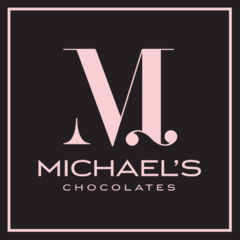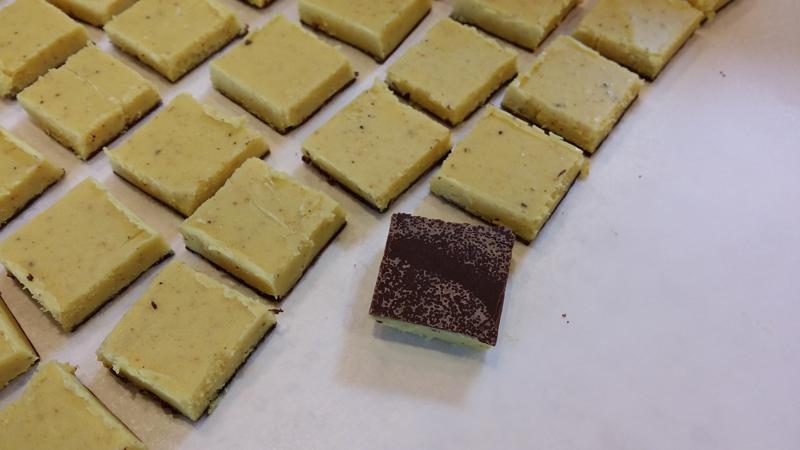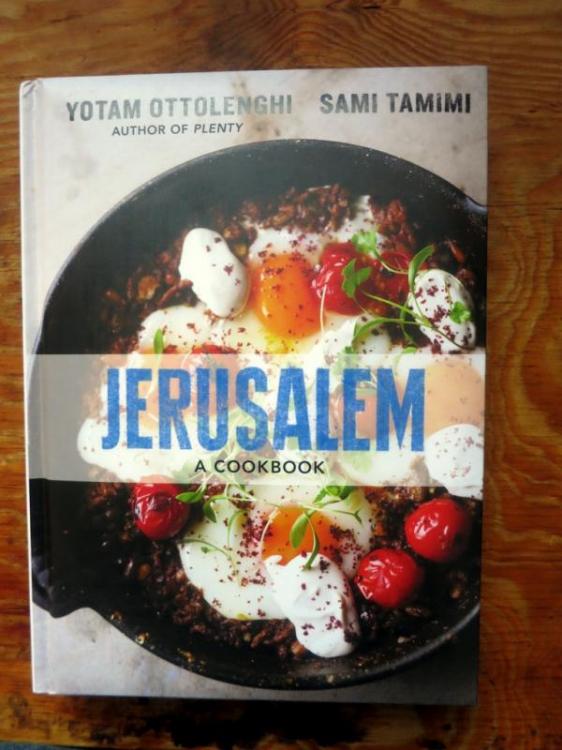Search the Community
Showing results for tags 'Cookbook'.
-
While not a new cookbook by any means, I haven't really had time to dig into this one until now. We've previously discussed the recipes in Jerusalem: A Cookbook, but not much has been said about Plenty. So, here goes... Chickpea saute with Greek yogurt (p. 211) This was a great way to kick off my time with this book. The flavors were outstanding, particularly the use of the caraway seeds and lemon juice. I used freshly-cooked Rancho Gordo chickpeas, which of course helps! The recipe was not totally trivial, but considering the flavors developed, if you don't count the time to cook the chickpeas it came together very quickly. I highly recommend this dish.
-
I know that there were similar threads, but I'm mostly interested in what kind of software or apps do you use for storing different kinds of recipes. For example, for most text and image based recipes I (like most people here) use Evernote. The notebooks-style organization works well, especially once you start using the Evernote Web Clipper. My browser (Citrio) can download videos, so video recipes are downloaded directly to the OneDrive folder on my PC and synced with the cloud. Very convenient, actually. At last, I'm currently testing the Asparagus android app. I might eventually move from Evernote to this one as it's more convenient for the quick references (though has no web clipper). What do you use for text, images and video recipes?
-
A friend gifted me a book written by someone I know of but only loosely. The acquaintance is a former missionary who has lived in Oaxaca for 15 years and co-authored this book with Susana Trilling (famous Oaxacan cooking instructor). The book is self published and really surprised me with its quality. The whole thesis is saving the indigenous foods of the area and combatting GMO infiltration of the area. Those of you who know the area might know of one of my hero restaurants - the like-minded Itanoni in Oaxaca City - surely they all travel in the same circles. Recipes are average fare - not fancy - clearly recipes from regular local folk, but very authentic, not fusion. They start with basic fresh masa, run you through all sorts of things including molé and salads and end up with stuff like yucca and egg tacos. The chapters include: Wild Greens (purslane, amaranth, etc), Beans & Squash, Salsa, Nopal and Maguey, Food and Fiesta, Medicinal uses. About 300 pages in all (so figure 150 in English and 150 in Spanish). This book is not available through Amazon. It is bilingual. I highly recommend it. Side note: Quite frankly these guys are goofs. They don't know how important and well produced this book is and aren't marketing it worth crap. Go buy it. Tell them I sent you. And enjoy this book. HERE
-
I'm making the citron cream recipe in Migoya's Elements of Desserts (p318/9?). It says to cook the anglaise to 85 degrees, place on an ice bath then whip the anglaise. I've done that but it doesn't seem to whip (let alone to a medium peak). This is a new technique I've not tried before so I'm at a loss. Anyone have any ideas?
-
I have been searching and searching for Jean-Pierre Wybauw's book: Chocolates 2: Ganache: Great Ganache Experience. I can't find a copy anywhere. Does anyone know if it is even still in print? I believe it was only published in 2010. It is (to my understanding) one of the definitive books of ganache formulation and recipe creation. I have his 4th book ,but this one eludes me. Any thoughts on where I might find a copy? My local library doesn't have it and brick and morter book stores are few and far between these days.
-
I'm hearing rumours of a new book from Fuchsia Dunlop, this time on Zhejiang cuisine from the east of China around Hangzhou and Ningbo, south of Shanghai. No date or title - or confirmation yet.
-
I use and love both Edwald Notter's (Art of the Chocolatier) and Peter Greweling's (Chocolates & Confections) books on making chocolate confections. But sometimes I wonder about different advice each of these experts gives. Case in point: the chocolate pre-coating on slabbed ganache before it's cut. Greweling says to slab the ganache, allow it to crystalize and then apply a thin coat of tempered dark chocolate at 86 F on top of that. Notter says to first apply a thin coat of overtempered chocolate - hot (95 F to 100 F) - to acetate, then lay down the frame and pour/slab the ganache. I've tried both, and like aspects of both. Here are my issues. (Note that I use a knife as I don't have a guitar cutter.) I'm attaching two photos to illustrate. 1) Tempered chocolate at 86 F method seems to result in chocolate that's harder to spread (thickens as it cools) and seems to break quite easily when cutting, compared to the overtempered 95-100 F chocolate method. However I've had varying degrees of success with "overtempered" since I'm never quite sure if I've achieved overtempered or just out-of-temper chocolate. The chocolate is easier to spread at the higher heat, but sometimes it gets streaks all over and is just hideous. But when I get it right, it is noticeably easier to cut. 2) Additionally, as I don't have a guitar and I find acetate to be a bit spendy, I slab my ganache on parchment paper. When I used Notter's method of first applying overtempered chocolate to the parchment (he says to use acetate), the parchment kind of warps and doesn't stay flat. Perhaps the combination of shrinkage and heat? I use parchment paper because cutting on the acetate damages it, and it's just expensive to use a new sheet for every batch. It's a bit easier to just apply the chocolate to the top of the ganache, in my opinion, rather than applying it as the first layer (though that layer of chocolate on the bottom does hold the bars down nicely). In my photos you'll see one is nicely tempered (Greweling's method), but it cracks so easily when cutting. And you'll see one doesn't crack, but it's clearly not properly tempered as I was aiming for "overtempered." What's your experience? Thanks!!
- 21 replies
-
- Confections
- Chocolate
-
(and 1 more)
Tagged with:
-
Recently took a big casserole cookbook out of our local library. Taste of Home Casseroles. Lots of lovely photos and over 400 recipes. Alas, many of the recipes call for cans of cream of this soup and that soup, packages of instant rice and potato mixes, refrigerated rolls and so on. And almost all the recipes were very North American. Not that I am damning these ingredients to the nether realms...I just want to know: where are the good casserole cookbooks? Are there any? Who has a title for me? Thanks.
-
Greetings, I've cooked several recipes from Keller's "Bouchon" the last couple of weeks, and have loved them all! At the moment (as in right this minute) I'm making the boeuf Bourguignon, and am a little confused about the red wine reduction. After reducing the wine, herbs, and veg for nearly an hour now, I'm nowhere near the consistancy of a glaze that Keller specifies. In fact, it looks mostly like the veg is on the receiving end of most of it. Is this how the recipe is meant to be? Can anybody tell me what kind of yield is expected? Any help would be appreciated. Thank you, kindly.
- 4 replies
-
- Cookbook
- Troubleshooting
-
(and 1 more)
Tagged with:
-
This unfortunately titled book changed my life. I always enjoyed cooking and idealized Julia Child & Jacque Pepin. But I was a typical home cook. I would see a recipe and try to duplicate it little understanding about what I was doing. Cooking the Nouvelle Cuisine in America talked about a philosophy of cooking. It showed me that there is more depth to cooking. A history. A philosophy. The recipes are very approachable and you can make them on a budget from grocery store ingredients. I read it as a grad student in Oregon, in the late 80's I had access to lots of fresh ingredients. And some very nice wines, cheap! I was suppose to be studying physics but I end up learning more about wine & cooking.
-
Here is the discussion thread. Here is the Amazon link. My first recipe was Mushroom Mapo Tofu p. 132 I was blown away by how good this tasted. Very spicy! Very authentic. I didn't miss the meat at all. I told Mr. Smokey I'd add ground pork next time and he said it didn't need it. Mr. Smokey refused pork? Ha! Definitely a keeper and maybe a regular rotation spot. If I had anything negative to say, it would be the dish wasn't very filling. The recipe is suppose to serve four but the two of us finished it off, no problem, and Mister wasn't full afterwards. A soup, or an appetizer could be paired with the dish to make a heartier meal. Note: I did receive a complimentary copy of the book to review, but all opinions of the book and recipes are mine.
-
On Nov. 7, 2017, Modernist Bread will finally arrive on my doorstep. Having preordered it literally the first day it was available, to say I'm excited about this book is a bit of an understatement. The team at The Cooking Lab have been gracious enough to give @Dave the Cook and me early electronic access to the book and so I've spent the last week pouring over it. I'm just going to start with a few initial comments here (it's 2600 pages long, so a full review is going to take some time, and require a bunch of baking!). Dave and I would also be happy to answer any questions you've got. One of the main things I've noticed about this book is a change in tone from the original Modernist Cuisine. It comes across as less "everything you know is wrong" and more "eighty bazillion other bakers have contributed to this knowledge and here's our synthesis of it." I don't think it's an exaggeration to say that Myhrvold and company are now the most experienced bread-bakers in the world. Not necessarily in terms of the number of identical loaves they've produced, but in the shear number of different recipes and techniques they've tried and the care with which they've analyzed the results. These volumes are a distillation of 100,000 years of human breadmaking experience, topped off with a dose of the Modernist ethos of taking what we know to the next level. The recipes include weight, volume, and baker's percentages, and almost all of them can be made by both a home baker and someone baking in a commercial facility. The home baker might need to compromise on shape (e.g. you can't fit a full-length baguette in most home ovens) but the book provides clear instructions for both the amateur and professional. The recipes are almost entirely concentrated in volumes 4 and 5, with very few in the other volumes (in contrast to Modernist Cuisine, where there were many recipes scattered throughout). I can't wait for the physical volumes to arrive so that I can have multiple volumes open at once, the recipes cross-reference techniques taught earlier quite frequently.
- 171 replies
-
- 11
-

-
Started in on Rob's book tonight. Nice pictures, interesting philosophy. The bit about grapevines reminded me ever so much about my balcony. My grapevine has been growing ten or twenty years, planted by the birds. Never a grape, ever. Only recently did I learn that unlike European grapes, the native grapevines are sexual. This one is undoubtedly a boy. He provides lovely leaves and shade, and something for the tomatoes to hang onto.
-
Those of us that have been following Rob Connoley's (aka gfron1) trek from home cook to down-and-literally-dirty locavore James Beard-semi-finalist chef are justifiably proud of his well-deserved transformation to a published author, which he has faithfully detailed in an earlier topic. If you're not familiar with his story, I urge you to catch up, then come back here, because we're ready to move on to the next step. Rob's book, Acorns & Cattails: A Modern Foraging Cookbook of Forest, Farm & Field, is finally, officially available. This alone is awesome news, and you should totally order your copy today. Or . . . . . . we want to continue the conversation about Rob, his book and his future plans in this topic. And just to up the awesomeness, Rob is offering a free book to a randomly selected participant here. Simply post a question or comment in this topic between now and 11:59 p.m. CST (US), 13 September 2016 and you'll be eligible to "win," based on a random drawing to be conducted, with each participant getting one chance, not including Society volunteers (and Rob himself. Multiple posts will not improve your chances, so don't get overheated.) The winner will be announced on 14 September. Rob will be along shortly to add his encouragement and whatever late-breaking news he has -- he's busy guy these days, so be patient -- but there's no need to wait to post questions or comments. P.S. And if you don't win, you should still get this book.
-
We have a local Italian bakery my mom loves, but they are very expensive and hard for her to get to. She also really likes cookbooks (she reads them even if she never cooks from them ) so I was thinking for her birthday I could get her a cookbook that has similar cookies and cakes, and offer to make a few things for her on request also. I'll obviously look myself, but eGullet is always well informed about the quality of cookbooks so I wanted to know if anyone has any recommendations. The thing about the Italian bakery is that the stuff they make seems to me to be not as sweet as classic American recipes, and often have more complex flavors and also are usually on the light end for whatever the item is. (Like even something that's intended to be dense doesn't have a very heavy sensation in the mouth.)
-
Is there a discussion in the book about the purpose of adding ascorbic acid? I just saw the contest #2 in which the recipe called for it. I'm curious because a woman I know on the internet used to work in a bakery in Vietnam, and said that to get similar results to the banh mi there, you need to add ascorbic acid. Does it act as a gluten relaxer? Traditional banh mi have a very tender and crisp crust, and a very light and tender, relatively closed crumb.
-
Has anyone seen this book yet? If so, do you have any comments about it you can share? The Praline
- 6 replies
-
- Confections
- Cookbook
-
(and 1 more)
Tagged with:
-
I know I'm way late to the party, but does anyone have a copy of Los Postres De El Bulli that they would be willing to sell or knowledge of where to find one? Thanks!
-
Dear all, Have already checked some topics about cake books from the index, but would like to start another one. I am looking for the recipe cake books which has the recipes of absolutely delicious layered cakes. You know, not just a cake + buttercream, but perhaps something more interesting, when flavor combination just leaves you with WOW! And of course the compliments from others.. Preferably not too complicated, the one which is possible to make for the intermediate baker at home. Any suggestions?
-
Every year I like to grab a baking cookbook or two for the house baker/my wife. What are some of the best options out there for 2013? Any eagerly anticipated gems arriving for the end-of-year blitz?
-
Andy Ricker's book on Thai food Pok Pok is all over the food internet recently. I "looked inside the book" on Amazon and felt like it was explaining things I knew in a teacher/student way that I don't care for. However, I am a sucker for the stories behind the food and it appears to have that going for it. Has anyone perused it? At this point I think it is a book I want to check out from the library as opposed to own.
-
After USGM, I went over to a Barnes & Noble and bought which I've been wanting to get for a long, long time. My partner, B, has their book "Plenty" which came out in May 2010. I considered buying that, but it didn't "grab" me the same way that this one did. I'm dreaming about making a few things right off the bat, like for instance, maqluba (page 127), sabih (page 91), charred okra with tomato, garlic and preserved lemon (page 74) and roast chicken with clementines and arak (page 179). I'm looking forward to cooking my way through this book. Anyone want to join me?
-
Greetings. I received the ElevenMadison Park cookbook for my birthday (December), and it is one of my favorite cookbooks of the year. The recipes are great (some very involved), as is the presentation of the food. I have cooked a few of the recipes and the flavors pair together quite well. One of my favorite things about the book is at the end. The end of the book contains many vinaigrette, infused oil, gels, pickling, and sorbet recipes, as wellasvarious other dessert recipes. It is a very nicely presented book, with recipes laid outvia each season. Has anyone else purchased the book? Have you cooked any recipes? How cookable did you feel the book was? Seth
- 1 reply
-
- Modernist Cuisine Forums
- Modernist
-
(and 1 more)
Tagged with:



















